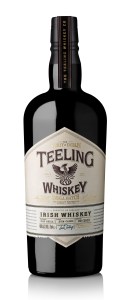Posted by admin on June 27, 2015
Portuguese winemaker Luis Duarte is a sought-after winery consultant
The Alentejo is a vast arid region, historically best-known for growing wheat and cork oak trees
First published in The Irish Times:
Sat, Jun 27, 2015, 00:00
Portuguese winemaker Luis Duarte jokes: “I have three lives.” Originally from the Douro, he began his winemaking career in Esporao, a well-known estate in the south of Alentejo. The Esporao wines, once popular with Superquinn customers, are available again through independents. Duarte moved on and now has relationships with no fewer than 10 wineries, almost all in the Alentejo, as consultant, proprietor or managing director – hence the three lives. One of only two people to be voted Portuguese Winemaker of the Year twice, he is recognised as one of the finest winemakers in his country.

The Alentejo is a vast arid region, historically best-known for growing wheat and cork oak trees (and the black pigs that feed on their acorns). More recently the construction of reservoirs has allowed a huge increase in olive oil production and viticulture, both with notable success. The Alentejo only received D.O. status in 1989, which may have retarded marketing efforts, but the lack of regulation meant winemakers were free to plant whatever grape varieties they wanted. It has certainly made the region one of the more varied and exciting in Portugal, although, by and large, native Portuguese (red and white) varieties hold sway. The wines tend to be forward and full of ripe fruit. After 18 years in Esporao, Duarte was on the point of setting up his own business when he was approached by a German insurance company that had bought an old farm in the Alentejo and wanted to turn it into a luxury agriturismo hotel and winery. They asked him to set up and run the operation and agreed he could keep his own project, Luis Duarte Vineyards, as well as running his consultancy.
Duarte has been manager of Herdade de Grous since its beginning in 2004. This, like Malandinha and Sobroso, has a small hotel, restaurant and spa, complete with swimming pool (infinity pools seem obligatory) and is very popular for weddings, weekend breaks and holidays with Portuguese and foreigner visitors.Regular travellers to the Algarve may be familiar with the Malandinha labels. Brothers Joao and Paulo Soares, with their families, own a chain of 15 wine shops in the south – unsurprisingly, their wines feature alongside other Portuguese and foreign wines. When I met Joao and Rita Soares they were still enjoying the afterglow of several awards for their wines. The estate is beautiful, set in the rolling hills, with a boutique hotel and restaurant. They produce their own olive oil and rear black pigs, horses and Alentejo cattle.
Both white and red wines reds are very good (they find it difficult to make sufficient white wine, frequently running out after six months) More expensive than the Monte Peceguina below, the claret-like Maladinha 2012 red is excellent and well worth the extra cost. Quinta do Sobrosa is one of Duarte’s more recent clients. This is a 1,600 hectare estate, although vines take up only 52 hectares. Filipe Teixeira Pinto and his wife, Sofia, began production in 2006 with a mix of Portuguese and international varieties.
Wine consultants are not always universally liked. Critics argue they impose the same winemaking techniques and produce similar wines wherever they work. If Duarte has a style, it is wines with rich, smooth fruit and good ripe tannins for the red wines, and plump, textured whites. However, the three wineries I visited all had a very distinct identities.
“Wine is a great international emblem for Portugal,” says Duarte. “If the government had spent money over the last 15 years marketing our image as a green country, instead of building motorways, we would be in a much better place. We produce fantastic fruit of all kinds. They may not always look perfect but they taste great. The Alentejo has great potential. The crisis is finishing and the future will be good.”
 Herdade dos Grous Red 2013
Herdade dos Grous Red 2013
13.5%
€18.95
A very moreish medium-bodied wine with rounded plump dark fruits.
Stockists: La Touche, Corkscrew, Fresh, O’Donovans, Donnybrook Fair, Deveney’s, Fallon & Byrne, Sweeney’s, Nectar, Redmonds, Mortons; D Six, Listons, Whelehan Wines, Red Island, Power & Co. On The Grapevine, Baggot St. Wines, Green Man Wines,Terenure, Mitchell & Son, The Wine Shop,Perrystown.
 Sobro Red 2013, Herdade de Sobrosa
Sobro Red 2013, Herdade de Sobrosa
13%
€14.95
An attractive blend of Aragonese and Alicante Bouschet with a little Syrah and Cabernet, this has light elegant blackcurrant and plum fruits, with a good dry finish.
Stockists: Stockists: La Touche, Corkscrew, Fresh, O’Donovans, Donnybrook Fair, Deveney’s, Fallon & Byrne, Sweeney’s, Nectar, Redmonds, Mortons; D Six, Listons, Whelehan Wines, Red Island, Power & Co. On The Grapevine, Baggot St. Wines, Green Man Wines,Terenure, Mitchell & Son, The Wine Shop,Perrystown.
 Mte de Peceguina Red 2013, Herdade de Malhadinha Nova
Mte de Peceguina Red 2013, Herdade de Malhadinha Nova
13%
€ 20.95
A lovely inviting wine with smooth fresh strawberry fruits and an easy finish.
Stockists: La Touche, Corkscrew, Fresh, O’Donovans, Donnybrook Fair, Deveney’s, Fallon & Byrne, Sweeney’s, Nectar, Redmonds, Mortons; D Six, Listons, Whelehan Wines, Red Island, Power & Co. On The Grapevine, Baggot St. Wines, Green Man Wines,Terenure, Mitchell & Son, The Wine Shop,Perrystown.









 Teeling Whiskey Small Batch
Teeling Whiskey Small Batch Teeling Whiskey Single Malt
Teeling Whiskey Single Malt Teeling Whiskey 21 year-old Single Malt
Teeling Whiskey 21 year-old Single Malt
 12.5%
12.5%
 13.5%
13.5%
 14%
14%
 12.5%
12.5%
 Herdade dos Grous Red 2013
Herdade dos Grous Red 2013 Sobro Red 2013, Herdade de Sobrosa
Sobro Red 2013, Herdade de Sobrosa Mte de Peceguina Red 2013, Herdade de Malhadinha Nova
Mte de Peceguina Red 2013, Herdade de Malhadinha Nova
 12%
12%
 13.5%
13.5%